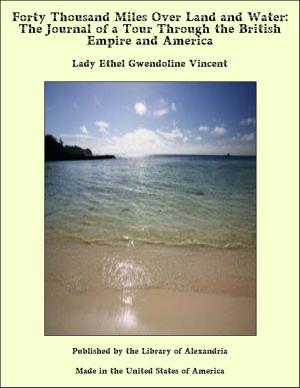| Author: | Sherwood Sweet Knight | ISBN: | 9781465583642 |
| Publisher: | Library of Alexandria | Publication: | March 8, 2015 |
| Imprint: | Language: | English |
| Author: | Sherwood Sweet Knight |
| ISBN: | 9781465583642 |
| Publisher: | Library of Alexandria |
| Publication: | March 8, 2015 |
| Imprint: | |
| Language: | English |
In reviewing the facts concerning humanity, which are well authenticated at the present date, with the object of getting a composite view of the greatest of all “world riddles”—“Life”—possibly nothing tends so largely to expand our mental horizon as a study of the earth itself or man’s place of abode. The ideas of the educated and cultured mind, at the beginning of the twentieth century, upon cosmogony, are necessarily of such a character that man’s heretofore undisputed boast of being the objective and acme of creation or evolution is forced into that great mass of theories which science has proven to be absolutely untenable. Since the relative importance of the factors of heredity and adaptation has become known, the environment, or conditions surrounding man’s existence in times past, is of exceptional importance, as, from an understanding of these prehistoric limitations, we are better able to judge what must have been the achievement of the individual and the race than we could be when in ignorance of these facts. The length of prehistoric time (so far as our earth is concerned) has been the subject of much intelligent labor and thought, as well as the occasion for much dissenting of opinion and more or less designed misstatement. Until very recently, it has been difficult to reconcile the theories, as promulgated by the authorities in the various departments of science; but, notwithstanding this, some light may be obtained by the summarization of the most plausible hypotheses now advocated. We cannot take the space to go into detail concerning these, but will merely touch upon the most salient points.
In reviewing the facts concerning humanity, which are well authenticated at the present date, with the object of getting a composite view of the greatest of all “world riddles”—“Life”—possibly nothing tends so largely to expand our mental horizon as a study of the earth itself or man’s place of abode. The ideas of the educated and cultured mind, at the beginning of the twentieth century, upon cosmogony, are necessarily of such a character that man’s heretofore undisputed boast of being the objective and acme of creation or evolution is forced into that great mass of theories which science has proven to be absolutely untenable. Since the relative importance of the factors of heredity and adaptation has become known, the environment, or conditions surrounding man’s existence in times past, is of exceptional importance, as, from an understanding of these prehistoric limitations, we are better able to judge what must have been the achievement of the individual and the race than we could be when in ignorance of these facts. The length of prehistoric time (so far as our earth is concerned) has been the subject of much intelligent labor and thought, as well as the occasion for much dissenting of opinion and more or less designed misstatement. Until very recently, it has been difficult to reconcile the theories, as promulgated by the authorities in the various departments of science; but, notwithstanding this, some light may be obtained by the summarization of the most plausible hypotheses now advocated. We cannot take the space to go into detail concerning these, but will merely touch upon the most salient points.















